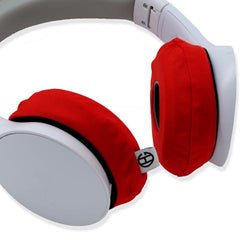Should Food Labels List Exercise Amounts, Not Calories?

The nutritional information listed on food products is ‘poorly understood’, that’s according to a study published on the Journal of Epidemiology & Community Health website.
Researchers pooled the findings of 15-studies showing a strong link between printing exercise amounts on food packaging and lower calorie consumption.
It means that instead of just seeing the number of calories in a food product, you’ll also see how many minutes or miles of exercise it’ll take to burn off. This is known as Physical activity calorie equivalent or expenditure (PACE) food labelling, and researchers believe that, just including it on packaging, could help people eat 200 fewer calories each day.
The study’s authors believe that if a person can clearly see that it takes 4-hours of walking to burn off a pizza but only 15-minutes of walking for a salad, then it could ‘create an awareness of the energy costs of food [and] drink.’
The NHS website uses three additional examples to show the kind of information that would be available to consumers on food and drink labelling.
You’d need to run:
- 13 minutes after drinking a 330ml can of fizzy drink
- 22 minutes after eating a standard size chocolate bar
- 42 minutes after eating a shop-bought chicken and bacon sandwich
PACE Labelling Could Help People Eat Less
Obesity is described by the NHS as someone who is very overweight and who has a lot of bodyfat.
Around 1 in 4 UK adults are currently classed as being obese and there are a number of heath conditions caused or exacerbated by obesity, including heart disease, type II diabetes and some cancers.
Earlier in 2019, the Independent reported that up to 360,000 people could be diagnosed with weight-related cancer by 2030. It goes on to say that obesity is the second highest cause of preventable cancer after tobacco.
Rates of obesity are growing, and no country in the world has yet managed to reverse the increasing number of people diagnosed. It’s understandable that researchers are looking for ways to fight what is increasingly looking like an epidemic.
If PACE labelling can help people eat 200 fewer calories each day, then that adds up to 1,400 fewer calories a week and 5,600 a month. PACE labelling won’t replace current nutritional information.
PACE Labelling Could Mean Healthy People Treat Themselves More

For people who regularly work out, this won’t be a huge surprise. Counting calories and then equating that number into a suitable workout is something that’s often done by those at a competitive level.
It could also help those of us who exercise regularly to enjoy food a little more. Wouldn’t it be nice to pick the most calorific item on the dessert menu because you know precisely how long it’ll take to burn off when you go for that run or spin class tomorrow.
Imagine it as two-fingers up to what the numbers on the menu is telling you, put on your headphones, add your sweat-proof covers to the cushions, and hit the treadmill with a target time or distance.
PACE Labelling Could Increase Food Anxiety
The Medical Daily website points out some concerns that it could be ‘problematic’ for people with eating disorders, and that it doesn’t account for the nutrients in food which are often independent of the calorie value.
PACE labelling could put some people off making healthier choices. For example, there may be fewer calories in a chocolate bar than in an avocado or parsnip.
There are concerns, too, that the information would add anxiety to eating, propagating the idea that all food is made equal based solely on the number of calories it contains.
Kristin Wilson, M.A., L.P.C tells Shape Magazine that it “reinforces the idea that exercise is simply a counterbalance for ingesting calories or that one should feel guilty for eating,"
Eloise Garbutt is an NHS dietician who believes that ‘oversimplifying nutrition’ is dangerous. Writing on the inews website, she argues that food is so much more than calorie content. ‘A healthy diet is not one size fits all,’ she writes, ‘and PACE labelling could increase feelings of guilt and punishment around foods high in calories’. There’s concern, too, that advice based on a set-number of calories won’t be accurate, and Eloise Garbutt offers the comparison of prescribing the same number of calorie burn to an 18-year-old girl as 50-year-old much heavier man.
Will PACE Labels Really Help Reduce Obesity?
PACE labelling will help some people make better food choices. It gives a value to the calorie that can sometimes be lacking on packaging, and using illustrative examples could greatly improve an individuals understanding of nutrition and food consumption. Given we’re facing a global obesity crisis, it’s got to be worth a shot, right?
But helping some people to make better choices shouldn’t come at the expense of those who have disordered eating or food-related anxiety. You shouldn’t look to help one group by throwing another under the bus.
And perhaps PACE labelling is only effective initially. What about when people get used to seeing the information, when it’s been on packaging a few months? Putting pictures of deformed foetuses and black lungs onto cigarettes hasn’t convinced everyone to give up smoking.
And part of the key to a healthy diet is enjoying exercise. Equating it to something that has to be done in order to lose weight seems a sorry way to get people involved in fitness.
But then it all comes back to the fact that 1 in 6 UK adults are now either overweight or obese and nothing has worked to reducing that number.
Maybe PACE labelling is worth a try, because so little else seems to be helping.
Would you support a move to PACE labelling or do you think it’s a bad idea? Drop us a comment below with your thoughts.


